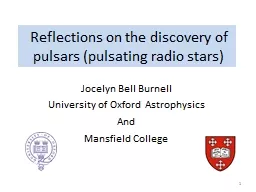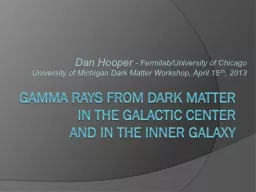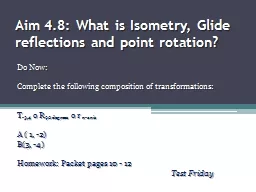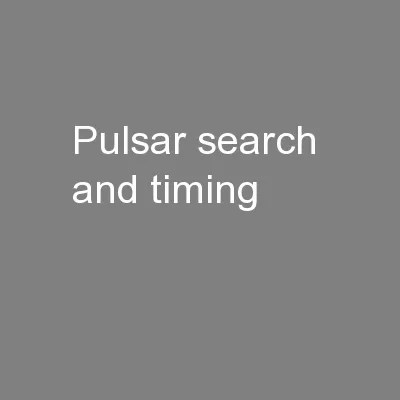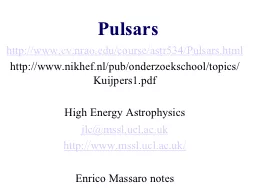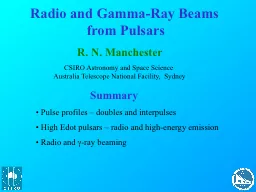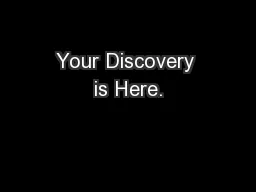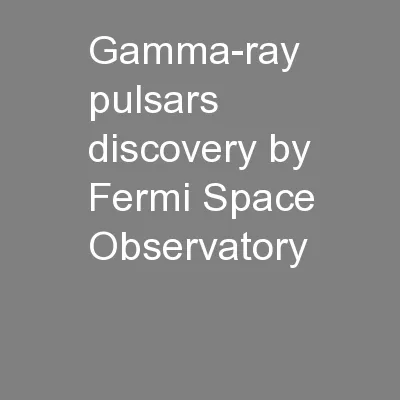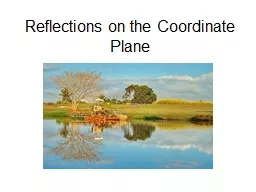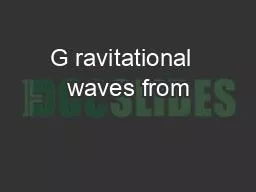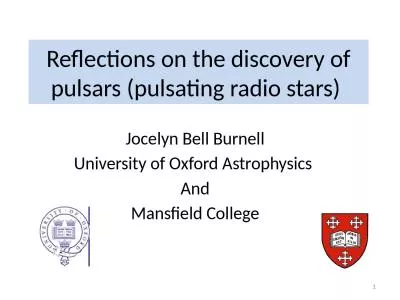PPT-1 Reflections on the discovery of pulsars (pulsating radio
Author : pasty-toler | Published Date : 2016-03-23
Jocelyn Bell Burnell University of Oxford Astrophysics And Mansfield College 1957 2 3 Crab PSR almost discovered I Late summer 1957 an Open Night at McDonald
Presentation Embed Code
Download Presentation
Download Presentation The PPT/PDF document "1 Reflections on the discovery of pulsar..." is the property of its rightful owner. Permission is granted to download and print the materials on this website for personal, non-commercial use only, and to display it on your personal computer provided you do not modify the materials and that you retain all copyright notices contained in the materials. By downloading content from our website, you accept the terms of this agreement.
1 Reflections on the discovery of pulsars (pulsating radio: Transcript
Download Rules Of Document
"1 Reflections on the discovery of pulsars (pulsating radio"The content belongs to its owner. You may download and print it for personal use, without modification, and keep all copyright notices. By downloading, you agree to these terms.
Related Documents

